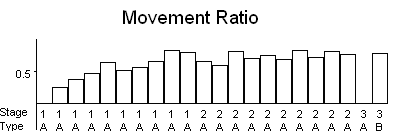
Measures of conditioned emotional response
Encyclopedia

Experimental psychology
Experimental psychology is a methodological approach, rather than a subject, and encompasses varied fields within psychology. Experimental psychologists have traditionally conducted research, published articles, and taught classes on neuroscience, developmental psychology, sensation, perception,...
, there are multiple measures of conditioned emotional response used by researchers as the measure of conditioned emotional response in a subject in classical conditioning
Classical conditioning
Classical conditioning is a form of conditioning that was first demonstrated by Ivan Pavlov...
experiments.
Movement ratio
The movement ratio is the proportion of time during the presentation of a conditioned stimulus that the subject is displaying elicited behavior. Movement ratio is defined as
Where MR = Movement Ratio, Tb=Time displaying the elicited behavior and Tt = Total time of CS presentation
Suppression ratio
The suppression ratio is equal to the response rate during a CS presentation divided by the sum of response rate during the CS plus the response rate in the period immediately preceding the CS. In other terms: .
.Where SR = Suppression Ratio, D = Responding during CS and B = Responding before CS.

